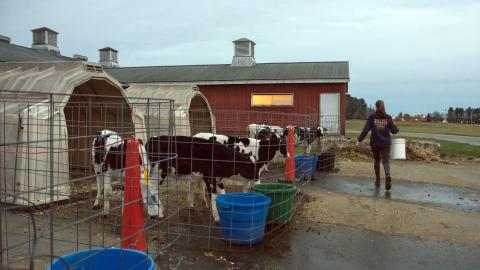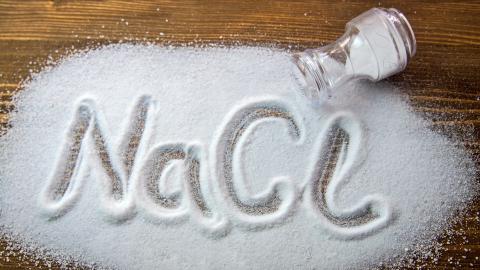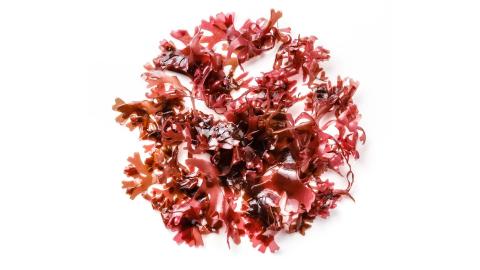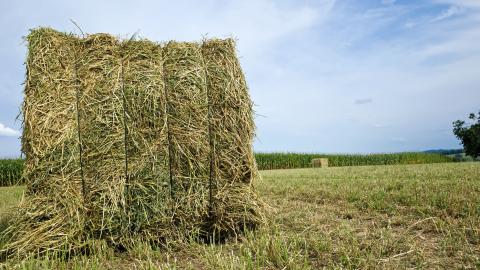NHAES INSPIRED Dairy Report, Winter 2021
We are delighted to share with you the latest research from our colleagues at the University of New Hampshire. The briefs in this report cover a diverse set of issues facing the dairy sector in the Granite State and northern New England. The topics range from feed production strategies, to feed additive assessments, calf health and methane emission reduction to name just a few. Each piece offers a snapshot of the rigorous science as well as the practical takeaways that can make individual dairy operations and the collective industry more economically resilient and environmentally sustainable. Read and download a pdf version of the entire publication below, or check out the individual Inspired Dairy research articles below. And sign up for the NHAES newsletter to receive the latest updates on future editions of the Inspired research report.
Rosenfeld, C.S., and R.M. Roberts. 2004. Maternal diet and other factors affecting offspring sex ratio: A. Review. Biol. Reprod. 71: 1063-1070.
Trivers, R.L., and D.E. Willard. 1973. Natural selection of parental ability to vary the sex ratio of offspring. Science 179: 90-92.
Gallo A., Giuberti G., Frisvad J., Bertuzzi T., and Nielsen K. Review on Mycotoxin Issues in Ruminants: Occurrence in Forages, Effects of Mycotoxin Ingestion on Health Status and Animal Performance and Practical Strategies to Counteract Their Negative Effects. 2015;7(8):3057–3111.
Logrieco, A.F. et al. The Mycotox Charter: Increasing Awareness of, and Concerte Action for, Minimizing Mycotoxin Exposure Worldwide. Toxins vol. 10,4 149. 4 Apr. 2018, doi:10.3390/toxins10040149
USDA. Fungal Diseases and Mycotoxin Reference. GIPSA. Washington D.C. 2016.
Whitlow, L.W., and W.M. Hagler. "Mycotoxin Contamination of Feedstuffs – An AdditionalStress Factor for Dairy Cattle.” North Carolina State University, projects.ncsu.edu/cals/an_sci/extension/dairy/mycoto~1.pdf.
Berthiaume, R., H. Lapierre, M. Stevenson, N. Cote, and B.W. McBride. 2000. Comparison of the in situ and in vivo intestinal disappearance of ruminally protected methionine. J. Dairy Sci. 83:2049-2056.
Ji, P., H.A. Tucker, R.E. Clark, M. Miura, and C.S. Ballard. 2015. Short communication: Effect on on-farm feeding practices on rumen protected lysine products. J. Dairy Sci. 99:1242-1246.
Lee, C., A.N. Hristov, T.W. Cassidy, K.S. Heyler, H. Lapierre, G.A. Varga, M.J. de Veth, R.A. Patton, and C. Parys. 2012. Rumen protected lysine, methionine, and histidine increase milk protein yield in dairy cows fed a metabolizable protein-deficient diet. J. Dairy Sci. 95:6042–6056.
Rulquin, H., P.M. Pisulewski, R. Verite, and J. Guinard. 1993. Milk production and composition as function of postruminal lysine and methionine supply: A nutrient-response approach. Livest. Prod. Sci. 37:69–90.
Schwab, C.G., C.K. Bozak, N.L. Whitehouse, and M.M.A. Mesbah. 1992a. Amino acid limitation and flow to the duodenum at four stages of lactation sequence of lysine and methionine limitation. J. Dairy Sci. 75:3486-3502.
Schwab, C.G., C.K. Bozak, N.L. Whitehouse, and V.M. Olson. 1992b. Amino acid limitation and flow to the duodenum at four stages of lactation. II. Extent of lysine limitation. J. Dairy Sci. 75:3503-3518.
Ort, S.B., K.M. Aragona, C.E. Chapman, E. Shangraw, A.F. Brito, D.J. Schauff, and P.S. Erickson. 2018. The impact of direct-fed microbials and enzymes on the health and performance of dairy cows with emphasis on colostrum quality and serum immunoglobulin concentrations in calves. J. Anim. Physiol. Anim. Nutr. 102: e641-e652.
Aragona, K.M., E.M. Rice, M. Engstrom, and P.S. Erickson. 2020. Supplementation of nicotinic acid to prepartum Holstein cows increases colostral immunoglobulin G, excretion of urinary purine derivatives, and feed efficiency in calves. J. Dairy Sci. 103:2287-2302.
Using an NSAID in Newborn Calves: Effects on IgG Uptake and Preweaning Calf Performance
Clark, M.O.C., T.C. Stahl, and P.S. Erickson. 2020. The effect of meloxicam on neonatal dairy calves: Immunoglobulin G uptake and preweaning performance. J. Dairy Sci. 103:11363-11374.
Murray, C. F., T. F. Duffield, D. B. Haley, D. L. Pearl, D. M. Veira, S. M. Deelen, and K. E. Leslie. 2015a. The effect of meloxicam NSAID therapy on the change in vigor, suckling reflex, blood gas measures, milk intake, and other variables in newborn dairy calves. J. Vet. Sci. Anim. Husb. 4:1–14.
Murray, C. F., D. B. Haley, T. F. Duffield, D. L. Pearl, S. M. Deelen, and K. E. Leslie. 2015b. A field study to evaluate the effects of meloxicam NSAID therapy and calving assistance on newborn calf vigor, improvement of health and growth in pre-weaned Holstein calves. Bov. Pract. 49:1–12.
Murray, C. F., D. M. Veira, A. L. Nadalin, D. M. Haines, M. L. Jackson, D. L. Pearl, and K. E. Leslie. 2015c. The effect of dystocia on physiological and behavioral characteristics related to vitality and passive transfer of immunoglobulins in newborn Holstein calves. Can. J. Vet. Res. 79:109–119.
Rice, E.M., K.M. Aragona, S.C. Moreland, and P.S. Erickson. 2019. Supplementation of sodium butyrate to postweaned heifer diets: Effects on growth performance, nutrient digestibility, and health. J. Dairy Sci. 102: 3121–3130.
Stahl, T.C., E. Hatungimana, K.D. Klanderman, S.C. Moreland, and P.S. Erickson. 2020. Sodium butyrate and monensin supplementation to post-weaned heifer diets: Effects on growth performance, nutrient digestibility, and health. J. Dairy Sci. 103:10207–10218.
Antaya, N. T., K. J. Soder, J. Kraft, N. L. Whitehouse, N. E. Guindon, P. S. Erickson, A. B. Conroy, and A. F. Brito. 2015. Incremental amounts of Ascophyllum nodosum meal do not improve animal performance but do increase milk iodine output in early lactation dairy cows fed high-forage diets. J. Dairy Sci. 98:1991–2004.
L. Machado, M. Magnusson, N. A. Paul, R. de Nys, and N. Tomkins. 2014. Effects of marine and freshwater macroalgae on in vitro total gas and methane production. PLoS ONE 9: e85289.
Hardie, C. A., M. Wattiaux, M. Dutreuil, R. Gildersleeve, N. S. Keuler, and V. E. Cabrera. 2014. Feeding strategies on certified organic dairy farms in Wisconsin and their effect on milk production and income over feed costs. J. Dairy Sci. 97:4612–4623.
S. L. Dillard, A. I. Roca-Fernández, M. D. Rubano, K. R. Elkin, and K. J. Soder. 2018. Enteric methane production and ruminal fermentation of forage brassica diets fed in continuous culture. J. Anim. Sci. 2018.96:1362–1374.
Sun, X., G. Henderson, F. Cox, G. Molano, S. J. Harrison, D. Luo, P. H. Janssen, and D. Pacheco. 2015. Lambs fed fresh winter forage rape (Brassica napus L.) emit less methane than those fed perennial ryegrass (Lolium perenne L.) and possible mechanisms behind the difference. PLoS ONE. 10:e0119697.
EPA. 2019. Global Non-CO2 Greenhouse Gas Emission Projections and Mitigation: 2015-2050. EPA-430-R-19-010. Available online at: https://www.epa.gov/sites/production/files/2019-09/documents/epa_non-co2_greenhouse_gases_rpt-epa430r19010.pdf (accessed November 10, 2021).
Hatungimana. E., and P.S. Erickson. 2019. Effects of storage of wet brewers' grains treated with salt or a commercially available preservative on the prevention of spoilage, in vitro and in situ dry matter digestibility, and intestinal protein digestibility. Applied Animal Science 35:464-475.
Hatungimana, E. T.C. Stahl, and P.S. Erickson. 2021. Effect of storage of wet brewers' grains with incremental levels of salt on apparent total tract nutrient digestibility and purine derivative excretion in dairy heifers. J. Anim. Sci. 99:1-8.
Hatungimana, E., T.C. Stahl, and P.S. Erickson. 2020. Growth performance and apparent total tract nutrient digestibility of limit-fed diets containing wet brewers' grains to Holstein heifers. Transl. Anim. Sci. 4:1-12.
G. A. Broderick, R. P. Walgenbach, and E. Sterrenburg. 2000. Performance of lactating dairy cows fed alfalfa or red clover silage as the sole forage. J. Dairy Sci. 83:1543–1551.
G. A. Broderick, A. F. Brito, and J. J. Olmos Colmenero. 2007. Effects of feeding formate-treated alfalfa silage or red clover silage on the production of lactating dairy cows. J. Dairy Sci. 90:1378–1391.
M. Johansen, P. Lund, and M. R. Weisbjerg. 2018. Feed intake and milk production in dairy cows fed different grass and legume species: a meta-analysis. Anim. 12: 66–75.













